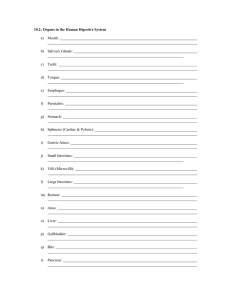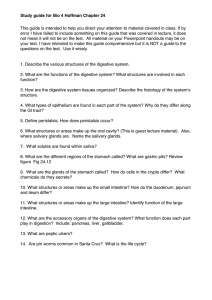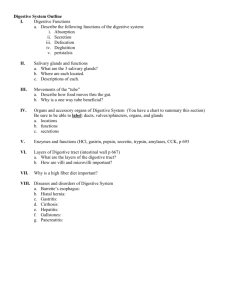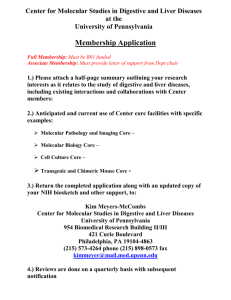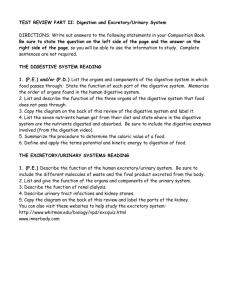Exam 5 Study Guide
advertisement
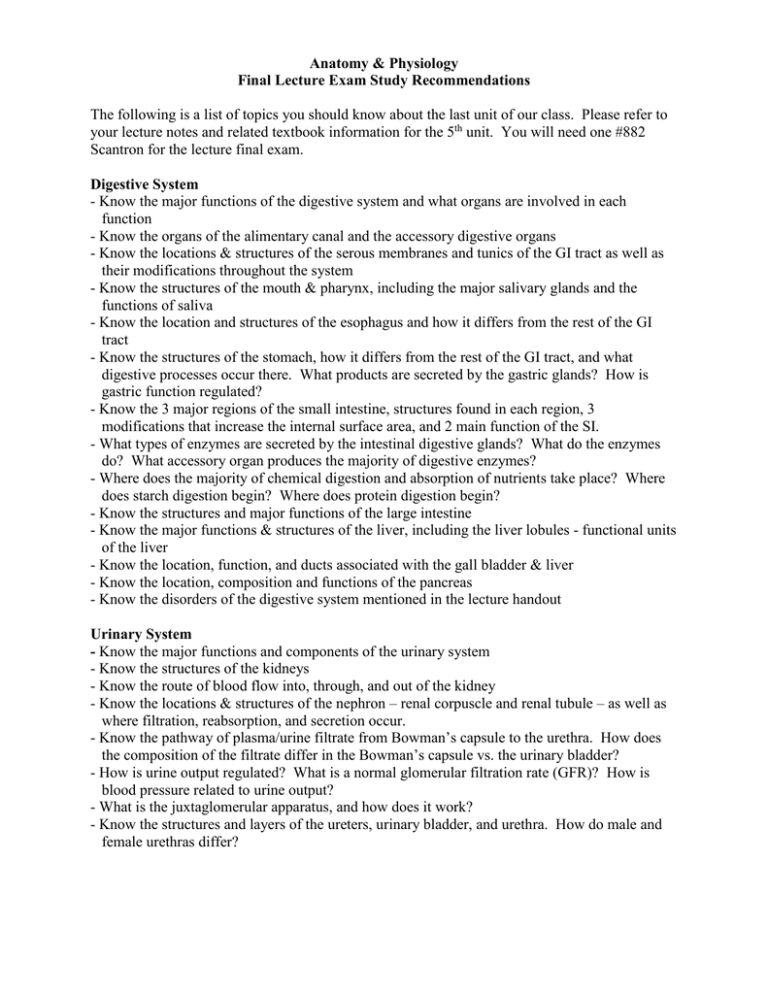
Anatomy & Physiology Final Lecture Exam Study Recommendations The following is a list of topics you should know about the last unit of our class. Please refer to your lecture notes and related textbook information for the 5th unit. You will need one #882 Scantron for the lecture final exam. Digestive System - Know the major functions of the digestive system and what organs are involved in each function - Know the organs of the alimentary canal and the accessory digestive organs - Know the locations & structures of the serous membranes and tunics of the GI tract as well as their modifications throughout the system - Know the structures of the mouth & pharynx, including the major salivary glands and the functions of saliva - Know the location and structures of the esophagus and how it differs from the rest of the GI tract - Know the structures of the stomach, how it differs from the rest of the GI tract, and what digestive processes occur there. What products are secreted by the gastric glands? How is gastric function regulated? - Know the 3 major regions of the small intestine, structures found in each region, 3 modifications that increase the internal surface area, and 2 main function of the SI. - What types of enzymes are secreted by the intestinal digestive glands? What do the enzymes do? What accessory organ produces the majority of digestive enzymes? - Where does the majority of chemical digestion and absorption of nutrients take place? Where does starch digestion begin? Where does protein digestion begin? - Know the structures and major functions of the large intestine - Know the major functions & structures of the liver, including the liver lobules - functional units of the liver - Know the location, function, and ducts associated with the gall bladder & liver - Know the location, composition and functions of the pancreas - Know the disorders of the digestive system mentioned in the lecture handout Urinary System - Know the major functions and components of the urinary system - Know the structures of the kidneys - Know the route of blood flow into, through, and out of the kidney - Know the locations & structures of the nephron – renal corpuscle and renal tubule – as well as where filtration, reabsorption, and secretion occur. - Know the pathway of plasma/urine filtrate from Bowman’s capsule to the urethra. How does the composition of the filtrate differ in the Bowman’s capsule vs. the urinary bladder? - How is urine output regulated? What is a normal glomerular filtration rate (GFR)? How is blood pressure related to urine output? - What is the juxtaglomerular apparatus, and how does it work? - Know the structures and layers of the ureters, urinary bladder, and urethra. How do male and female urethras differ? 2 Reproductive Systems (male & female) - Know the major functions & structures of the male & female reproductive systems - Know the primary vs. the secondary (accessory) reproductive structures of the male & female - Know the location of the perineum, as well as the structures and functions of the scrotum, penis, & vulva - Know the structures and functions of the testes & ovaries. What process takes place in the seminiferous tubules to form sperm and ovaries to form ova? - Know the structures & functions of the spermatic ducts, the pathway of sperm from the seminiferous tubules to urethra, and the location & composition of the spermatic cord - Know the locations of the 3 male accessory glands, as well as the types of fluids contributed to semen by each. What is semen composed of (in general)? - What major sex hormones are produced in males vs. females and where are they produced? -What hormones control spermatogenesis, oogenesis, ovulation, menstruation, and what structure produces the hormones? - Know the structures of the uterine (Fallopian) tubes, uterus, and vagina, as well as the ligaments supporting them and the ovaries. - Know the methods of birth control mentioned in lecture, which are the most vs. least effective, and which do and do not help to prevent STDs - Know the STDs caused by bacteria vs. viruses, how each is transmitted, their symptoms, and the type of bacteria or virus that cause each. Embryology - Know the processes and structures involved in fertilization, the preembryonic period (stages of development), and implantation (Where does fertilization usually occur? How long after fertilization does implantation occur? Describe the preembryonic stages of development.) - Distinguish between the preembryonic, embryonic, and fetal periods of development - What are the 3 germ layers, when do they form, and what does each become? - What are the 4 extraembryonic membranes? What is the function of each? - Know the origin, structure & function of the placenta & umbilical cord. - Know the major structures that develop during the 3rd-8th weeks of development. - What are teratogens and when is the developing embryo/fetus most susceptible to them?

